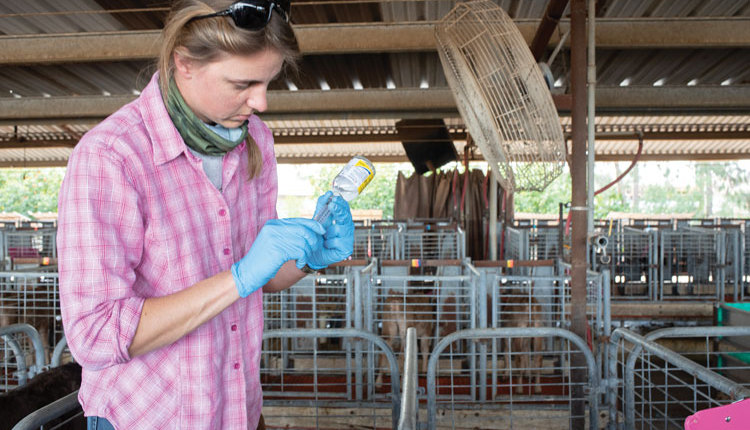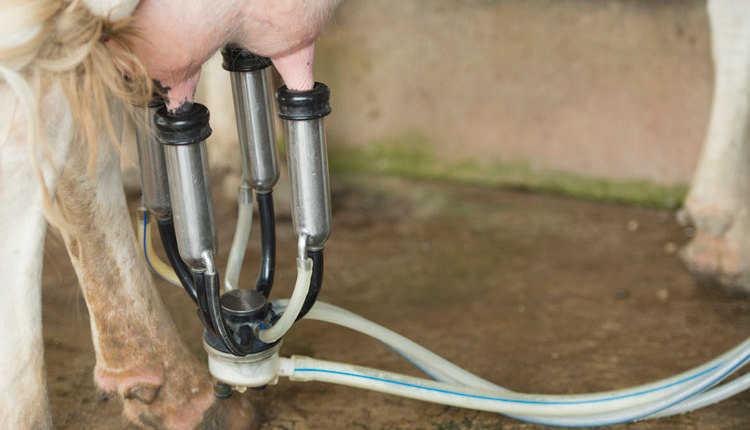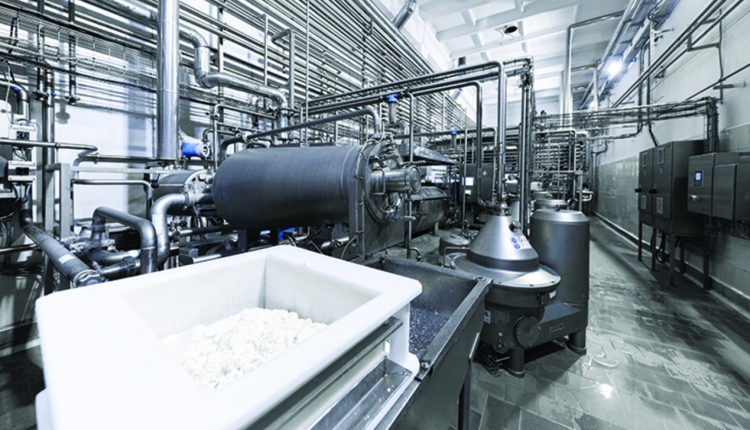The author and her family own and operate a sixth-generation dairy farm near St. Johns, Mich.

Bedding and towels both play a critical role in milk quality and the potential need for antibiotic intervention to treat infections. University of Minnesota College of Veterinary Medicine researchers set out to learn if certain bedding types or towel cleaning practices elevate or lower the risk for mastitis.
Does bedding matter?
The Minnesota team had a three-part objective in its first study, “Cross-sectional study of the relationships among bedding materials, bedding bacteria counts, and intramammary infection in late-lactation dairy cows” (Journal of Dairy Science, S. Rowe, December 2019). The researchers aimed to describe the infection and pathogen profiles in cows approaching dry-off, compare intramammary infection prevalence in cows using different bedding materials, and identify associations between bedding bacteria count and intramammary infection in cows approaching dry-off.
To perform the largest survey of intramammary infection in cows approaching dry-off in the U.S., the study worked with 80 herds from 10 states. The four bedding types sampled were manure solids, organic non-manure, new sand, and recycled sand.
After each herd was visited twice for sampling, researchers collected milk samples from 20 cows. They also collected samples of both unused and used bedding.
The study showed that the overall prevalence of all-intramammary infection was 21.05% of quarters and 50.4% of cows. Most intramammary infections were caused by non-aureus Staphylococcus and Streptococcus or Streptococcus-like organisms, with very few quarters infected with coliform bacteria.
Researchers found that bedding bacteria count was positively associated with intramammary infections in general. They also found that the association between bedding bacteria count in unused bedding and intramammary infection was mostly consistent across all four common bedding material types.
In contrast, the association between counts of bacteria in used bedding and intramammary infection varied by bedding material type.
Only modest differences in intramammary infection prevalence were observed between the four bedding materials. The results indicate that none of the bedding materials evaluated in the study were superior to another relative to the odds of intramammary infection in late lactation.
“We know from previous studies that bedding does impact udder health,” said Sandra Godden, D.V.M., one of the study’s authors and a University of Minnesota professor.
“In this study, the bedding didn’t have as much of an impact on udders because we were testing a special population approaching dry-off,” she said. “Most mastitis cases are in early or peak lactation, and at this point, those cows have gotten better or left the herd. If we sampled quarters at a different lactation point, we may have seen more infection and a stronger bedding effect.”
What about the towels?
There was a three-part focus in the second study, “Cross-sectional study of the relationship between cloth udder towel management, towel bacteria counts, and intramammary infection in late-lactation dairy cows” (Journal of Dairy Science, S. Rowe, December 2019). The Minnesota veterinarians aimed to describe the relationship between towel bacteria count and intramammary infection in late-lactation cows, establish target levels of bacteria in cloth udder towels, and identify laundering-related risk factors.
Researchers collected quarter milk samples from 20 late-lactation cows and two recently laundered cloth udder towels. Farm workers also provided information by questionnaire about teat preparation and cloth udder towel practices.
The prevalence of intramammary infection was 19.6%, which was predominantly caused by non-aureus Staphylococcus spp. (NAS; 10.2%) and Streptococcus or Streptococcus-like organisms (5.1%). The predominant bacteria in cloth udder towels were Bacillus. Total bacteria count was not associated with odds of intramammary infection, likely due to the predominance of Bacillus in cloth udder towers and the low number of intramammary infections caused by Bacillus.
In contrast, counts of Staphylococcus and Streptococcus-like organisms on towels were positively associated with odds of intramammary infection, caused by non-aureus Staphylococcus and Streptococcus-like organisms, respectively.
Out of the 12 cloth udder towel management practices evaluated, specifically one — the failure to use a hot air dryer — was identified as a clear risk for a high towel bacteria count.
The study findings also suggest that cloth udder towels may act as a carrier for non-aureus Staphylococcus and Streptococcus-like organisms. The researchers recommend that herds aim to keep counts of Staphylococcus and Streptococcus-like organisms in cloth udder towels below 32 colony forming units per square centimeter (cfu/cm2) or five colony forming units per square inch (cfu/in2), and that laundered towels be completely dried in a hot air dryer.
“One would think it should be obvious that laundering and hot-air drying of towels would be an important path to reduce infections, but there’s been almost no science behind it. Even though we’ve known this in our gut, this is the first study to scientifically demonstrate this relationship,” Godden said.
Out of these studies, farmers can draw clear conclusions applicable to their own operations.
“Our first study reinforces the message we need to make sure cows are on clean bedding to reduce prevalence of infection during dry-off,” Godden said. “As for the towel study, the message is that clean towels matter. And we now have a better understanding of the importance of good laundering and hot-air drying practices.”
Treat every cow?
The study results may also impact antibiotic use on farms.
“One of our research focus areas is identifying opportunities to reduce antibiotic use by selectively treating dry cows,” Godden said. “Eighty percent of U.S. herds still practice blanket antibiotic treatment at dry-off. But our herds are doing much better by adopting practices to reduce prevalence of infection at dry-off. With reduced prevalence of infection at dry-off, blanket dry cow therapy may no longer be necessary in many herds.”
Of course, the economics for bedding and cloth towel management always is a factor in decision-making.
“We must tie in an economic component, because when you’re making any management changes on a farm, it can sometimes get expensive,” Godden said. “Improved udder health is always good, but we also need to know the return on investment (ROI) before adopting any new technology.”










